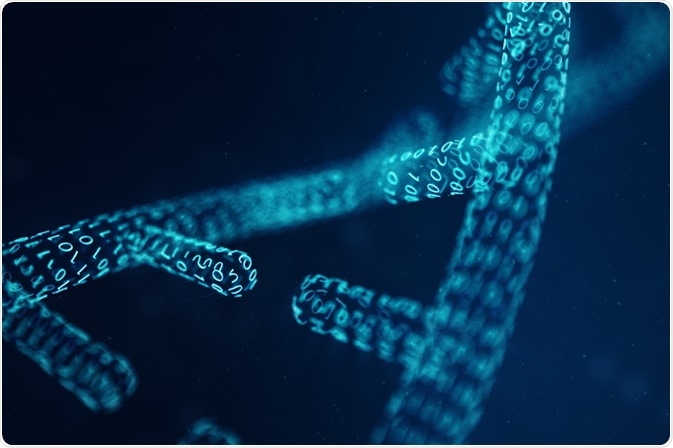Cell lines are an invaluable research tool. However, while they are easy to grow and manipulate, the risk of contamination is high. This can have a detrimental effect on research results, thus, there is a need for new techniques that can ensure sterility in cell culture. DNA barcoding - the identification of a specific cell line using a genetic sequence - is just one of the solutions that has been proposed to solve this issue.
 Image Credit: Rost9/Shutterstock.com
Image Credit: Rost9/Shutterstock.com
What causes contamination in cell lines?
Whenever a new cell line is acquired it should be authenticated by various methods, such as DNA barcoding, to ensure that the cells are not contaminated. In addition, when a stock is cryopreserved, it should be checked for the presence of Mycoplasma bacteria. Mycoplasmas are small, hard to detect bacteria that often infect cell cultures.
Usually, a cell should not be passaged for more than three months and stock cultures should be kept in quarantine conditions at all times. Cell line cross-contamination (CLCC) is a major issue in various laboratories and can be caused by sharing pipettes, reagents, mislabelling, concurrently working with multiple cell lines, use of feeder cells, etc.
What is DNA barcoding?
DNA barcoding uses short regions of genes are to identify and authenticate a specific cell line. The “Barcode”, as the name suggests, refers to a characteristic genetic sequence that can be used to identify a specific cell type.
Mitochondrial DNA is commonly used for barcoding, as this DNA can show a 5 to 10-fold higher number of differences between cell lines compared with nuclear DNA. The analysis of mitochondrial DNA is also much easier than nuclear DNA, as it requires only a single PCR and sequencing step. Intra-species variation is also very low in mitochondrial DNA.
All of these factors make it an ideal candidate for DNA barcoding. Usually, the gene encoding cytochrome C oxidase, a mitochondrial gene, is used for this purpose. The inheritance of this gene is maternal, and it has a high abundance within the cell.
DNA barcoding methodology
- A tiny fragment of the sample is used to extract the mitochondrial DNA*.
- The DNA sample undergoes PCR amplification and sequencing, and the resultant data is compared to a DNA sequence database to identify the cell line.
- Degenerate primers are used for amplifying the barcode region of mitochondrial Cytochrome C Oxidase I, and then public sequence databases can be used to assign an identity.
- The barcode sequence may be placed in BOLD (Barcode Of Life Data systems) for the convenience of future researchers, a searchable database that consists of a reference library of DNA barcodes.
All existing cell lines have been validated using this method and in cases where the sequence similarity is low, the cell line may be closely related species or a sub-species.
*The DNA for the analysis should have a concentration of 100 ng/μl and a minimum volume of 50 μl. DNA should always be kept on ice packs if being sent out for analysis. The growing cultures are sent in flasks that are topped with media and covered in parafilm to avoid leakage.
DNA barcoding versus other techniques for cell line authentication
Whole-genome sequencing is a powerful method that has the ability to provide information regarding the identity of a cell line and the presence of mutations. However, currently, the method requires a lot of technical and bioinformatic tools, making it too expensive for many laboratories.
Characterizing cell lines on the basis of phenotype or gene expression is another potential authentication technique. However, both these parameters can be strongly influenced by the environment and other conditions. Thus, to use this method, strict controls need to be in place before inferring the results.
At present, DNA barcoding is a useful method that is well developed and standardized, and thus, can be put into practice easily.
Further Reading
Last Updated: Feb 1, 2021